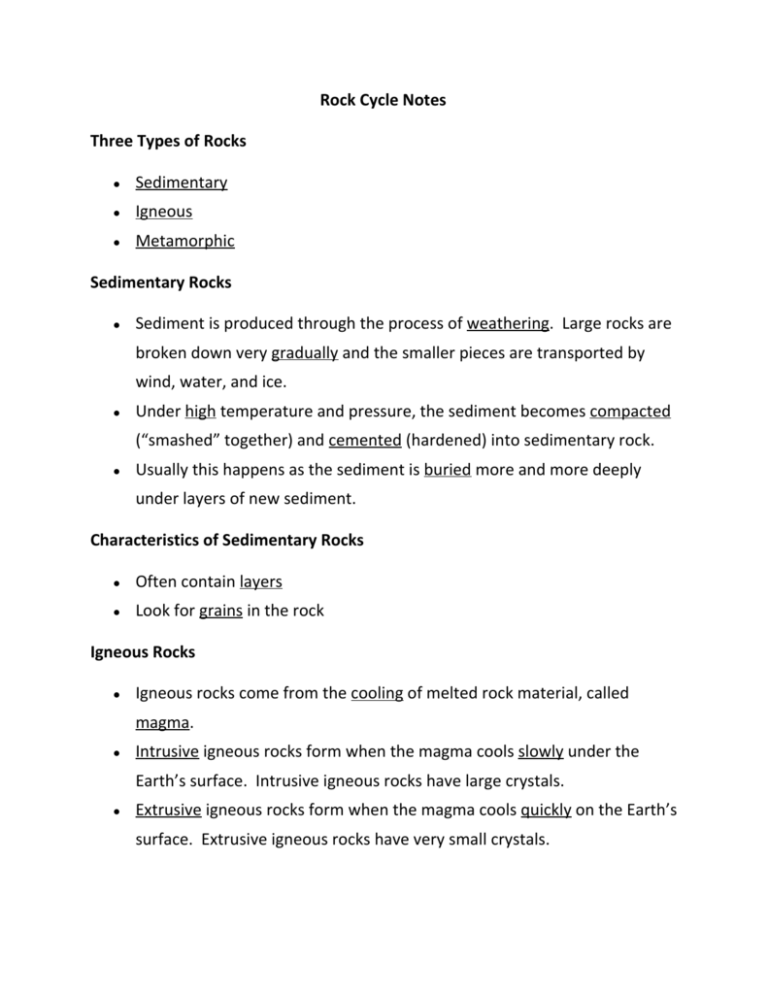Rock Cycle Notes Three Types of Rocks Sedimentary
advertisement

Rock Cycle Notes Three Types of Rocks ● Sedimentary ● Igneous ● Metamorphic Sedimentary Rocks ● Sediment is produced through the process of weathering. Large rocks are broken down very gradually and the smaller pieces are transported by wind, water, and ice. ● Under high temperature and pressure, the sediment becomes compacted (“smashed” together) and cemented (hardened) into sedimentary rock. ● Usually this happens as the sediment is buried more and more deeply under layers of new sediment. Characteristics of Sedimentary Rocks ● Often contain layers ● Look for grains in the rock Igneous Rocks ● Igneous rocks come from the cooling of melted rock material, called magma. ● Intrusive igneous rocks form when the magma cools slowly under the Earth’s surface. Intrusive igneous rocks have large crystals. ● Extrusive igneous rocks form when the magma cools quickly on the Earth’s surface. Extrusive igneous rocks have very small crystals. Characteristics of Igneous Rocks ● Most igneous rocks are very hard ● Made of crystals ● Layering is not common in igneous rocks Metamorphic Rocks ● Sedimentary and igneous rocks can become buried deep in the Earth’s crust. ● Metamorphic rocks form when the buried rock is changed under high temperature and pressure. ● The rock does not melt. Instead, new minerals grow and the rock remains solid. Characteristics of Metamorphic Rocks ● Layering is common ● Different layers are made up of different minerals ● Often made of plates and flaky layers The Rock Cycle ● The rock cycle is the combination of all the processes that act to break down rocks, move sedimentary rocks from place to place, and make new rocks. ● The processes of the rock cycle are very gradual and happens over times that range from thousands to millions of years or longer. The Rock Cycle






